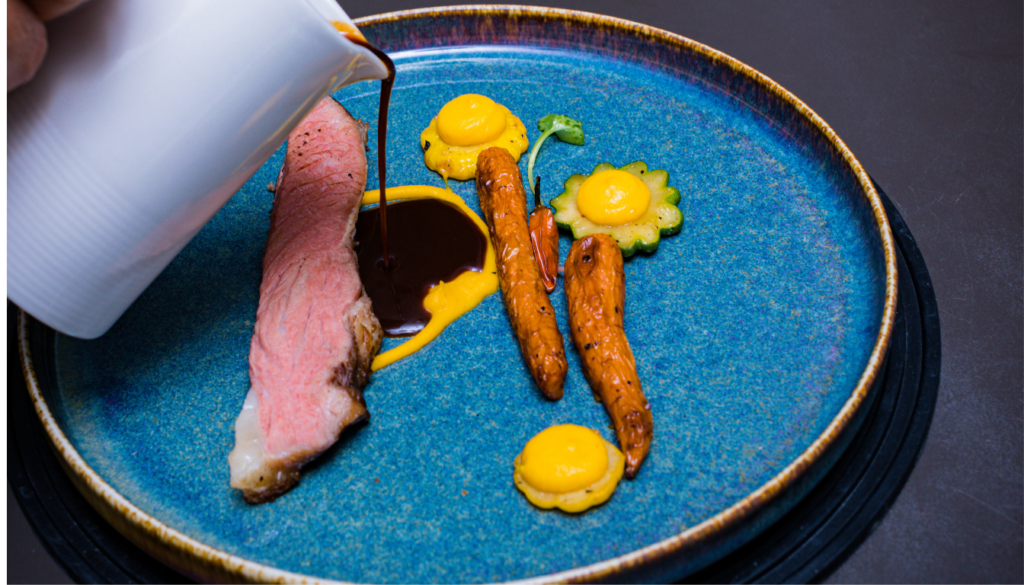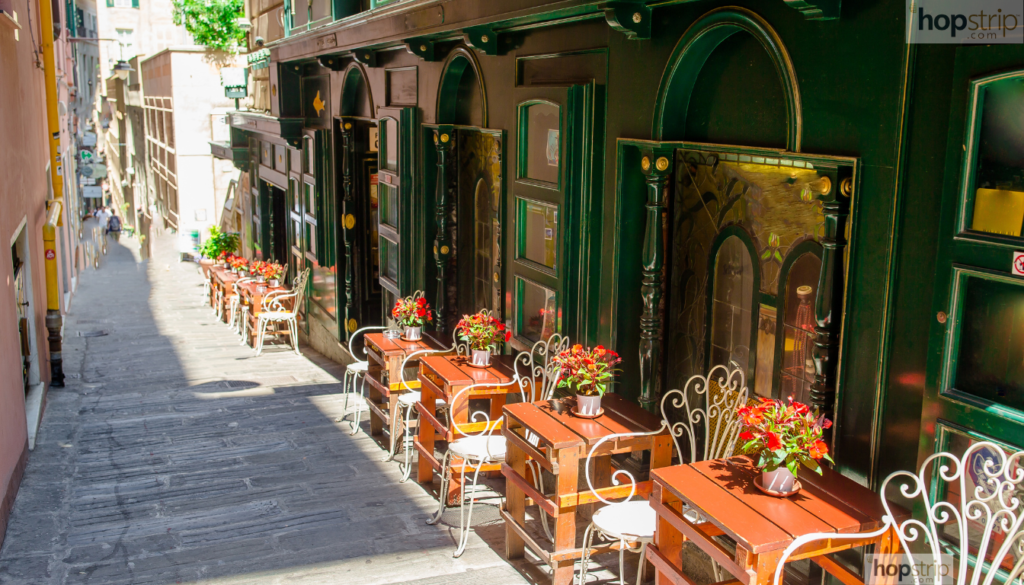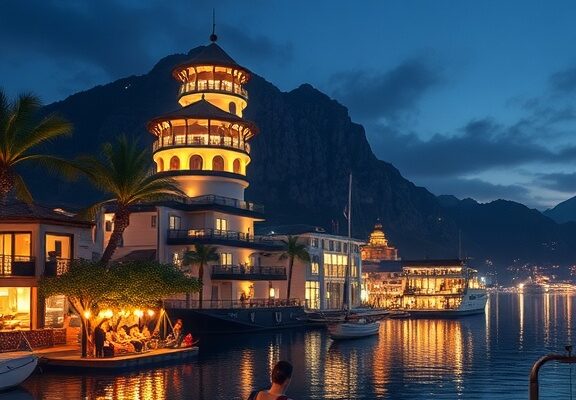Table of Contents
Embark on a gastronomic journey as we delve into the world of fine dining and explore the quest for culinary excellence. From the history of top restaurants to the innovative techniques and flavors that define them, this article offers a comprehensive and detailed exploration of the topic, catering to the diverse interests and needs of general readers seeking to discover the top restaurant in the world.
Thank you for reading this post, don't forget to subscribe!The History of Top Restaurants
Evolution of Fine Dining
The concept of fine dining has evolved over the centuries, from the lavish feasts of ancient civilizations to the sophisticated and innovative culinary experiences of today. Fine dining establishments have a rich history rooted in the traditions of hospitality and gastronomy. Early fine dining was characterized by opulent settings and elaborate menus, reflecting the social status of patrons. Over time, the focus shifted towards culinary artistry, with chefs becoming the new aristocrats of the dining world.

The Rise of Michelin Stars
The Michelin Guide, first published in the early 20th century, has played a pivotal role in shaping the landscape of top restaurants. Earning Michelin stars is a prestigious honor that signifies exceptional quality and culinary mastery. Restaurants around the world vie for these stars, viewing them as a benchmark for excellence and a means to attract discerning diners. The rigorous evaluation process assesses various aspects, including the quality of ingredients, the mastery of flavor and cooking techniques, the personality of the cuisine, value for money, and consistency.
Influence of Cultural Movements
Cultural movements such as Nouvelle Cuisine in France and the farm-to-table movement have significantly influenced fine dining. These movements emphasize creativity, presentation, and the use of fresh, locally sourced ingredients. They encourage chefs to experiment with flavors and techniques, fostering an environment where culinary innovation thrives. This cultural shift has broadened the definition of fine dining, making it more inclusive and diverse.
Influence of Top Chefs
Top restaurants have been shaped by the influence of visionary chefs who have redefined the culinary landscape with their creativity and expertise. Renowned chefs such as Alain Ducasse, Thomas Keller, and Massimo Bottura have set new standards for excellence in the culinary world. These culinary maestros bring their unique philosophies and innovative techniques to their kitchens, inspiring both their staff and peers to push the boundaries of what is possible in fine dining.
Culinary Pioneers and Their Impact
Chefs like Ferran Adrià and Grant Achatz have pioneered molecular gastronomy, introducing avant-garde techniques that transform traditional dishes into extraordinary culinary experiences. Their willingness to experiment and embrace new technologies has influenced countless chefs and restaurants worldwide, promoting a culture of continuous improvement and innovation in the pursuit of culinary excellence.
Mentorship and Culinary Education
Many top chefs are also dedicated mentors, training the next generation of culinary talent. Esteemed institutions and mentorship programs affiliated with top restaurants provide aspiring chefs with the skills and knowledge necessary to excel in the competitive world of fine dining. This emphasis on education and mentorship ensures that the legacy of culinary excellence continues to thrive.
Impact of Globalization

Globalization has played a significant role in the evolution of top restaurants, allowing for the fusion of diverse culinary traditions and the introduction of exotic ingredients and flavors. This has led to a more dynamic and eclectic dining experience for patrons around the world. The exchange of culinary ideas and practices across borders has fostered creativity and experimentation, enabling restaurants to offer menus that are both globally inspired and locally sourced.
Fusion Cuisine: Blending Traditions
Fusion cuisine has become a hallmark of many top restaurants, seamlessly blending elements from different culinary traditions to create unique and innovative dishes. This approach not only enhances the dining experience but also reflects the interconnectedness of our global society. Restaurants like Nobu and Zuma exemplify this trend, offering menus that combine Japanese techniques with Peruvian and other international flavors.
Access to Global Ingredients
The ability to source ingredients from around the world has expanded the possibilities for chefs, allowing them to incorporate rare and exotic components into their dishes. This global access enhances the depth and complexity of flavors, enabling top restaurants to craft extraordinary culinary experiences that captivate the senses.
Characteristics of the Top Restaurant
Innovative Culinary Techniques

The top restaurants are known for their innovative culinary techniques, pushing the boundaries of traditional cooking methods to create unique and memorable dishes. Molecular gastronomy, sous vide cooking, and other avant-garde approaches have become synonymous with the pursuit of culinary excellence. These techniques not only enhance the flavors and textures of dishes but also provide diners with an immersive and interactive dining experience.
Farm-to-Table Philosophy
Embracing the farm-to-table philosophy, many top restaurants prioritize the use of fresh, locally sourced ingredients. This commitment to sustainability and quality ensures that each dish is crafted with the utmost care and attention to detail. By forging strong relationships with local farmers and suppliers, these restaurants support the community and reduce their environmental footprint.
Exceptional Flavors and Ingredients
The use of exceptional flavors and high-quality ingredients is a hallmark of the top restaurants. From rare truffles to sustainably sourced seafood, these establishments spare no expense in sourcing the finest ingredients to elevate the dining experience. Chefs meticulously select each component of their dishes, ensuring that every bite offers a harmonious balance of taste, aroma, and presentation.
Impeccable Service and Ambiance
In addition to exceptional cuisine, the top restaurants also excel in providing impeccable service and creating a captivating ambiance. Every aspect of the dining experience, from the attentiveness of the staff to the aesthetic appeal of the dining space, is carefully curated to ensure a memorable and luxurious experience for guests. The synergy between the culinary offerings and the overall environment creates an atmosphere that is both welcoming and extraordinary.
Technological Integration in Dining
Top restaurants are increasingly integrating technology to enhance the dining experience. From digital menus and table-side tablets to advanced reservation systems and personalized dining experiences using data analytics, technology plays a crucial role in modern fine dining. These innovations streamline operations, improve service efficiency, and offer guests a seamless and interactive dining journey.
List of Top Restaurants in the World
Osteria Francescana, Italy

Under the leadership of chef Massimo Bottura, Osteria Francescana has consistently been ranked as one of the highest rated restaurants in the world. Known for its innovative take on traditional Italian cuisine, the restaurant has earned three Michelin stars and the coveted title of “World’s Best Restaurant.” Bottura’s creations are a blend of art and culinary mastery, offering dishes that are both visually stunning and delectably flavorful. Signature dishes like “Five Ages of Parmigiano Reggiano” showcase his ability to reinterpret classic ingredients in novel ways.
El Celler de Can Roca, Spain
Located in Girona, Spain, El Celler de Can Roca is renowned for its avant-garde culinary techniques and commitment to showcasing the best of Catalan cuisine. Helmed by the Roca brothers, the restaurant has been a mainstay in the list of restaurants worldwide, earning three Michelin stars and widespread acclaim. The Roca brothers combine traditional recipes with modern innovations, creating a dining experience that is both nostalgic and forward-thinking. Their tasting menus offer a journey through a diverse range of flavors and textures, each course meticulously crafted to delight the palate.
Mirazur, France

Nestled in the French Riviera, Mirazur is celebrated for its breathtaking views and inventive Mediterranean-inspired cuisine. Chef Mauro Colagreco‘s commitment to sustainable practices and his innovative approach to flavors have earned the restaurant three Michelin stars and a prominent position among the world’s best restaurants. Mirazur‘s menu is a reflection of the region’s natural bounty, emphasizing fresh, seasonal ingredients and vibrant, harmonious flavors. Dishes like “Black Olive and Avocado Sorbet” exemplify the restaurant’s creativity and dedication to culinary excellence.
Atelier Moessmer Norbert Niederkofler, Italy
Atelier Moessmer Norbert Niederkofler in Italy is another contender in the world’s best restaurants list. Renowned for its dedication to sustainable and ethical practices, the restaurant offers a menu that highlights locally sourced ingredients and traditional Italian flavors with a modern twist. The intimate setting and impeccable service make it a favorite among food enthusiasts seeking a refined and authentic dining experience.
Asador Etxebarri, Atxondo, Spain
Asador Etxebarri in Atxondo, Spain, is famed for its mastery of open-fire cooking. Chef Victor Arguinzoniz‘s expertise in grilling brings out the natural flavors of each ingredient, creating dishes that are both simple and extraordinary. This highest rated restaurant emphasizes quality and technique, making it a standout on the list of restaurants in the world.
Arzak, San Sebastian, Spain
Arzak in San Sebastian, Spain, has long been celebrated as one of the top restaurants in the world. Under the guidance of Juan Mari Arzak and his daughter Elena Arzak, the restaurant combines traditional Basque cuisine with innovative techniques, resulting in a dining experience that is both rooted in heritage and forward-thinking. Arzak‘s commitment to excellence has earned it multiple Michelin stars and a loyal following among global diners.
Alléno Paris au Pavillon Ledoyen, France
Alléno Paris au Pavillon Ledoyen, led by chef Yannick Alléno, is one of the most prestigious world’s restaurants in Paris. Located in the historic Pavillon Ledoyen, the restaurant offers a luxurious setting and a menu that showcases refined French cuisine with a contemporary edge. Yannick Alléno‘s innovative approach has garnered multiple Michelin stars, solidifying the restaurant’s status as one of the number 1 restaurant in the world.
Blue Hill at Stone Barns, USA
Blue Hill at Stone Barns in Pocantico Hills, New York, exemplifies farm-to-table dining at its finest. Chef Dan Barber emphasizes sustainability and ethical sourcing, creating dishes that highlight the flavors of fresh, local produce. The restaurant’s picturesque setting and commitment to sustainability and ethical practices make it a standout among the best restaurants in the world.
Additional Top Restaurants
- Atelier Crenn, USA: Chef Dominique Crenn’s innovative French cuisine has earned her restaurant multiple Michelin stars.
- Noma, Denmark: René Redzepi‘s Noma is renowned for its groundbreaking approach to Nordic cuisine, frequently topping global rankings.
- Eleven Madison Park, USA: Located in New York City, Eleven Madison Park offers a sophisticated menu that blends contemporary techniques with classic flavors.
Best Indian Restaurants in the World
While the top restaurants in the world often showcase a variety of international cuisines, there is a growing recognition of best Indian restaurants in the world. These establishments blend traditional Indian flavors with modern culinary techniques to create extraordinary dining experiences.
Gaggan, Bangkok, Thailand
Gaggan in Bangkok has been hailed as one of the highest rated restaurants in the world and the number 1 restaurant in the world for several years. Chef Gaggan Anand offers a progressive Indian menu that challenges traditional notions of Indian cuisine, using molecular gastronomy to create innovative and playful dishes.
Indian Accent, New Delhi, India
Indian Accent in New Delhi is renowned for its creative approach to Indian cuisine, blending traditional flavors with contemporary presentation. Chef Madhur Jaffrey leads the kitchen, crafting dishes that are both visually stunning and deliciously satisfying, making it one of the world’s best restaurants.
Bukhara, New Delhi, India
Bukhara at the ITC Maurya Hotel in New Delhi is famed for its robust and flavorful North Indian cuisine. With a focus on tandoori dishes and slow-cooked specialties, Bukhara has earned its place among the best restaurants in the world, attracting food enthusiasts from around the globe.
Emerging Trends in Fine Dining
The Role of Food Critics and Awards
Food critics and prestigious awards such as the Michelin Guide and The World’s 50 Best Restaurants play a pivotal role in recognizing and promoting culinary excellence. Their evaluations and rankings often influence the reputation and success of top restaurants. Positive reviews and high rankings can attract a global clientele, while also encouraging chefs to maintain and elevate their standards. Social media influencers and online reviews have also become significant in shaping public perception and driving restaurant popularity.
Sustainability and Ethical Practices in Top Restaurants
In recent years, there has been a growing emphasis on sustainability and ethical practices in the culinary world. Top restaurants are increasingly incorporating environmentally conscious initiatives, such as reducing food waste and supporting local farmers, to align with the values of conscientious diners. Sustainable practices not only benefit the environment but also enhance the quality and integrity of the dining experience. Innovations like zero-waste kitchens and the use of biodegradable materials are becoming standard in top-tier establishments.
The Rise of Plant-Based Cuisine
Another significant trend in fine dining is the rise of plant-based cuisine. As more diners seek out vegetarian and vegan options, top restaurants are expanding their menus to include innovative and flavorful plant-based dishes. This shift not only caters to changing dietary preferences but also promotes sustainability and health-conscious eating. Plant-based menus showcase the versatility of vegetables and grains, proving that gourmet dining can be both delicious and ethical.
Immersive Dining Experiences
Immersive dining experiences are gaining popularity among fine dining establishments. These experiences engage all the senses, offering more than just a meal but a complete narrative journey. Concepts such as themed dining rooms, interactive courses, and multi-sensory presentations create memorable and engaging experiences for guests. By blending storytelling with culinary artistry, top restaurants are transforming dining into an unforgettable adventure.
Fusion of Traditional and Modern Techniques
The fusion of traditional and modern cooking techniques is another emerging trend in fine dining. Chefs are blending age-old culinary practices with contemporary innovations to create dishes that honor heritage while embracing progress. This approach allows for the preservation of cultural flavors and methods, ensuring that culinary traditions are not lost but rather evolved to meet modern tastes and preferences.
Challenges Faced by Top Restaurants
Running a top restaurant comes with its own set of challenges, from maintaining high standards to adapting to changing market trends. Understanding these challenges provides insight into what makes these establishments truly exceptional.
Maintaining Consistency
Consistency is crucial for top restaurants to retain their reputation and Michelin stars. Ensuring that every dish meets the highest standards, regardless of the day or the chef, requires rigorous training, precise processes, and unwavering attention to detail.
Adapting to Market Trends
Staying relevant in a constantly evolving culinary landscape requires top restaurants to adapt to emerging trends without compromising their core identity. This balance between tradition and innovation is essential for attracting new patrons while satisfying loyal customers.
Navigating Economic Pressures
Economic fluctuations can impact the cost of high-quality ingredients and operational expenses. Top restaurants must navigate these pressures by optimizing their supply chains, managing costs effectively, and sometimes reinventing their menus to maintain profitability without sacrificing quality.
Attracting and Retaining Talent
The culinary industry is highly competitive, making it challenging to attract and retain top talent. Providing a supportive work environment, opportunities for growth, and recognition are key factors in building a team that can uphold the restaurant’s standards of excellence.
Customer Experiences and Reviews
Customer experiences and reviews play a significant role in the success of top restaurants. Positive word-of-mouth and stellar reviews can propel a restaurant to global fame, while negative feedback can tarnish its reputation.
Importance of Personalized Service
Personalized service enhances the dining experience, making guests feel valued and special. Top restaurants train their staff to anticipate guests’ needs, remember preferences, and provide tailored recommendations, ensuring a memorable and enjoyable visit.
Leveraging Technology for Customer Engagement
Top restaurants are leveraging technology to engage with customers beyond the dining experience. From interactive websites and mobile apps to virtual tours and online reservations, technology facilitates seamless interactions and fosters a strong connection with patrons.
Gathering and Utilizing Feedback
Constructive feedback is invaluable for continuous improvement. Top restaurants actively seek feedback through various channels, such as comment cards, online reviews, and direct interactions. Analyzing this feedback allows them to identify areas for enhancement and implement necessary changes to elevate the dining experience.
Future of Fine Dining
The future of fine dining is poised to be even more innovative and inclusive, driven by technological advancements, evolving consumer preferences, and a continued emphasis on sustainability.
Integration of Artificial Intelligence
Artificial Intelligence (AI) is set to revolutionize fine dining by personalizing the dining experience, optimizing kitchen operations, and enhancing customer service. AI-driven systems can analyze customer preferences, predict trends, and assist chefs in creating bespoke menus tailored to individual tastes.
Virtual and Augmented Reality Experiences
Virtual and augmented reality technologies offer new dimensions to the dining experience. Imagine enjoying a multi-sensory meal where each course is accompanied by immersive visual and auditory elements that complement the flavors and themes of the dishes.
Emphasis on Health and Wellness
As health and wellness become increasingly important to consumers, top restaurants are incorporating nutritious and balanced options into their menus. Emphasizing whole foods, superfoods, and nutrient-dense ingredients ensures that fine dining can be both indulgent and health-conscious.
Expanding Global Influence
The influence of global cuisines will continue to expand, with more restaurants embracing diverse culinary traditions and fusion techniques. This cultural exchange fosters innovation and enriches the dining landscape, offering patrons a broader array of flavors and experiences.
What Is the Best Restaurant in the World?
Determining what is the best restaurant in the world is subjective and varies based on individual preferences, culinary trends, and evolving standards of excellence. However, the list of restaurants provided above highlights some of the most consistently recognized establishments known for their unparalleled quality, innovation, and service.
World 1 Restaurant: Osteria Francescana
Osteria Francescana often leads discussions about the world’s best restaurant. Its unique blend of traditional Italian cuisine with modern culinary techniques sets it apart as a leader in the global dining scene.
What Are the Best Restaurants in the World?
The best restaurants in the world are distinguished by their commitment to excellence, innovative approaches to cuisine, and exceptional dining experiences. These establishments not only offer outstanding food but also create memorable experiences through their ambiance, service, and attention to detail.
Blue Hill at Stone Barns
Blue Hill at Stone Barns exemplifies the essence of the best restaurants in the world with its farm-to-table philosophy and dedication to sustainability. Chef Dan Barber’s approach ensures that every dish is a celebration of fresh, local produce.
Asador Etxebarri
Asador Etxebarri stands out as one of the best restaurants in the world due to its mastery of open-fire cooking and focus on enhancing natural flavors. The restaurant’s minimalist approach allows the quality of ingredients to shine.
What Is the Number 1 Restaurant in the World?
While rankings can fluctuate annually based on various criteria, Osteria Francescana has frequently been recognized as the number 1 restaurant in the world. Its innovative cuisine, exceptional service, and unique dining experiences make it a top contender in global rankings.
What Are the Top Restaurants in the World?
The top restaurants in the world are those that consistently deliver exceptional culinary experiences, maintain high standards of service, and innovate within their respective cuisines. The list of top restaurants provided in this article includes:
- Osteria Francescana, Italy
- El Celler de Can Roca, Spain
- Mirazur, France
- Atelier Moessmer Norbert Niederkofler, Italy
- Asador Etxebarri, Atxondo, Spain
- Arzak, San Sebastian, Spain
- Alléno Paris au Pavillon Ledoyen, France
- Blue Hill at Stone Barns, USA
Conclusion: Embarking on the Quest for Culinary Excellence
Embark on a gastronomic journey as we delve into the world of fine dining and explore the quest for culinary excellence. From the history of top restaurants to the innovative techniques and flavors that define them, this article offers a comprehensive and detailed exploration of the topic, catering to the diverse interests and needs of general readers seeking to discover the top restaurant in the world.
As the culinary landscape continues to evolve, the pursuit of excellence remains at the heart of the world’s top restaurants. Whether through groundbreaking techniques, exceptional ingredients, or unparalleled service, these establishments set the standard for what fine dining can achieve. For those passionate about food and the art of dining, the quest for culinary excellence is an ever-exciting journey, promising new discoveries and unforgettable experiences.







